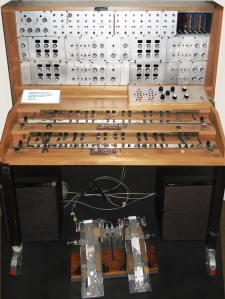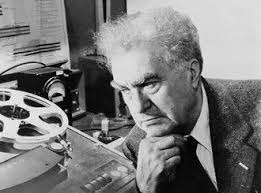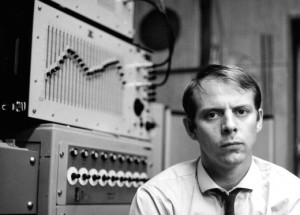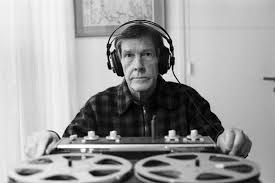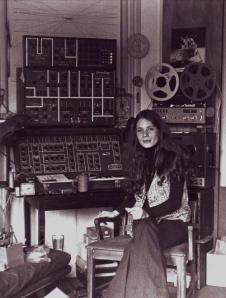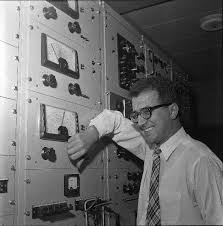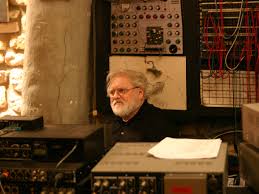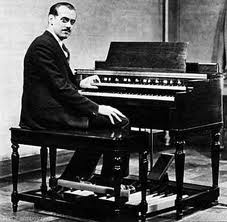Pioneers of Electronic Music (2000)
Pioneers of Electronic Music combines a modified speaking voice with electronic music. The text is a compilation/description of composers, programmers, inventors, engineers, and their instruments.
The complete text is divided into groups of names, paragraphs preceded by a date, and definitions preceded by a title.
Dated texts and names are read a little slower and a little more formal than the definition texts. Definition texts are read more informally.
Each text or group of names is followed by a short silence. Some texts are preceded by a date.
Signal processing devices and techniques are employed as timbral enhancement to the speaking voice. Although it is intended that he text be clearly heard throughout.
The electronic music consists of contemporary electronic/digital sounds along with a variety of fragments from recordings of historic Electronic Music. The recorded music is of early electronic and computer music, with particular emphasis on the pioneer composers and inventors who have shaped the history of electronic music.
Historical musical fragments are of varied duration. Overall, the duration of fragments are varied to preserve continuity.
The electronic music is presented completely independently of the Speaking Voice. There is no attempt to synchronize with the Voice, or to characterize the text in any way.
The selection and distribution of composers, engineers, inventors, and electronic instruments is my own.
About the Text
Except for the list of names, the texts were selected from Nicolas Slonimsky’s spectacular and fascinating “Brobdingnagian and quaquaversal” Music Since 1900, The Fourth Edition, published in 1971, and from The Supplement to Music Since 1900 published in 1986, both by Charles Scribner’s Sons, New York.
In certain instances I have added clarifying words, such as an English translation from the French. In a few cases I have shortened a text, or a text has been slightly broken-up, separated by an ellipsis.
-J. H.
Symphony of Episodes (2005)
(symphonic segments from Luciano Berio, Pierre Boulez, John Cage, Elliott Carter, Charles Ives, Olivier Messiaen, Karlheinz Stockhausen, Edgar Varese, Anton Webern; original electronic sounds)
The music consists of a single recorded track containing a variety of symphonic episodes by many of the leading musical voices of the 20th-21st century. The original track, containing a random distribution of orchestral samples, was separated into short segments, naturally bounded by silences. The segments were numbered, then recombined independently of one another, with little or no separation of silence between them. In addition, I have added a variety of electronic sounds selected from my library of samples. Together, the orchestral and electronic music represent a synthesis of 20th century musical thought and expression.
– J. H.


